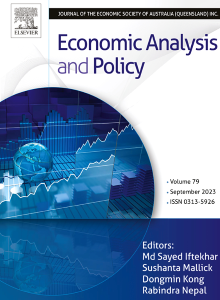Exchange rate volatility and supply chain disruption
IF 8.7
2区 经济学
Q1 ECONOMICS
引用次数: 0
Abstract
This paper examines how Chinese firms adapt their supply chains in response to the risks brought by exchange rate volatilities. When the volatility of the effective exchange rate of Chinese Yuan increases, firms experience significantly higher separation rates. Leveraging a firm-country-year dataset, we further demonstrate that firms are more likely to terminate suppliers from countries with higher bilateral exchange rate volatility. Firms diversify the risks by shifting their suppliers to domestic markets and stabilizing relationships with suppliers in other foreign countries. Our analysis reveals that financial hedging strategies effectively curb supply chain disruptions, and firms with stronger bargaining power, a larger pool of potential suppliers, higher switching costs, and fewer credit constraints are less affected by exchange rate volatility.
汇率波动和供应链中断
本文考察了中国企业如何调整其供应链以应对汇率波动带来的风险。当人民币有效汇率波动增加时,企业分离率显著升高。利用企业-国家-年度数据集,我们进一步证明,企业更有可能终止来自双边汇率波动较大国家的供应商。企业通过将供应商转移到国内市场和稳定与其他国家供应商的关系来分散风险。我们的分析表明,金融对冲策略有效地抑制了供应链中断,议价能力更强、潜在供应商池更大、转换成本更高、信贷约束较少的企业受汇率波动的影响较小。
本文章由计算机程序翻译,如有差异,请以英文原文为准。
求助全文
约1分钟内获得全文
求助全文
来源期刊

Economic Analysis and Policy
ECONOMICS-
CiteScore
9.80
自引率
9.20%
发文量
231
审稿时长
93 days
期刊介绍:
Economic Analysis and Policy (established 1970) publishes articles from all branches of economics with a particular focus on research, theoretical and applied, which has strong policy relevance. The journal also publishes survey articles and empirical replications on key policy issues. Authors are expected to highlight the main insights in a non-technical introduction and in the conclusion.
 求助内容:
求助内容: 应助结果提醒方式:
应助结果提醒方式:


